Verified Answer
Objectives
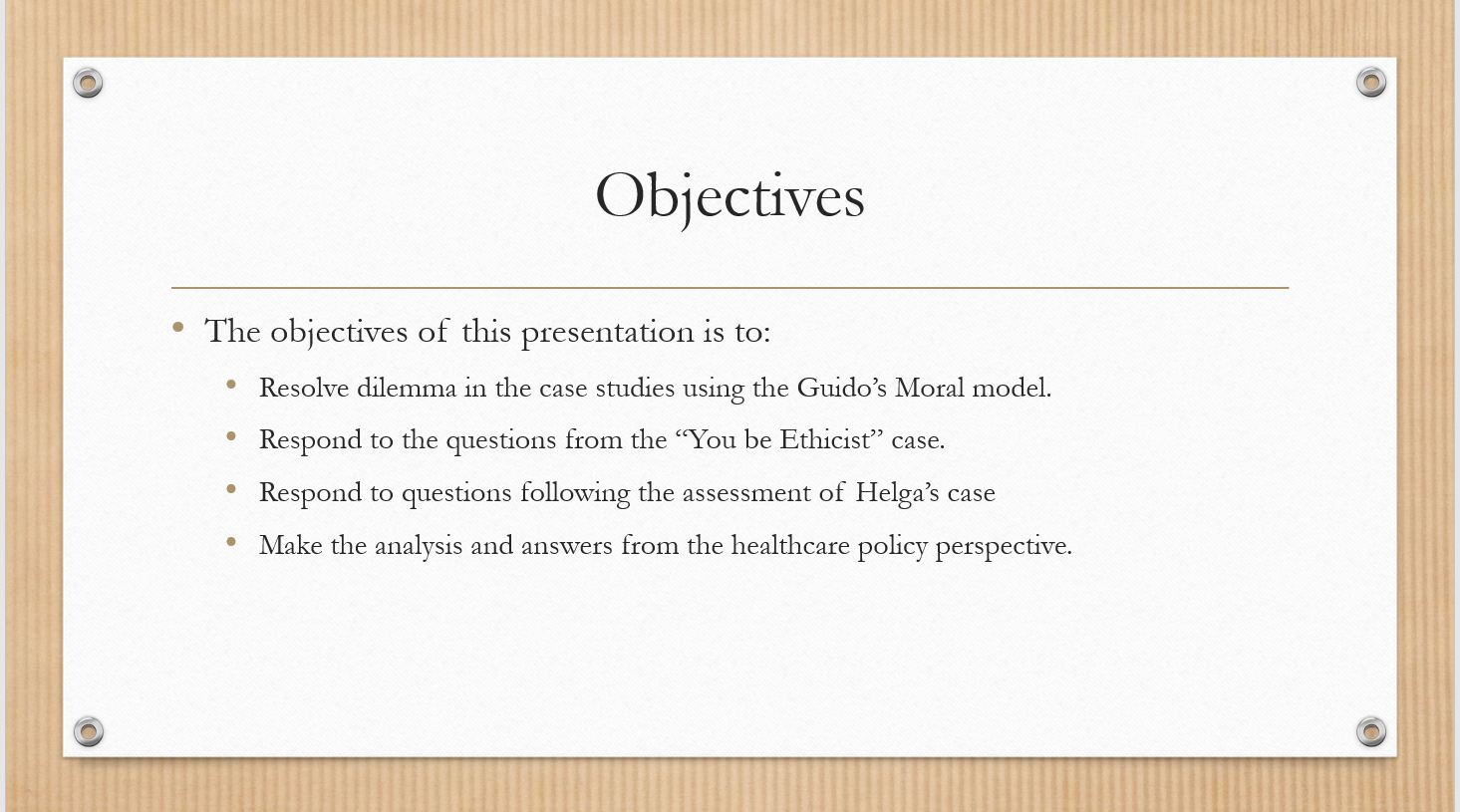
Using Guido’s Textbook 7th Edition, the presentation will make use of the Guido’s Moral model to analyses the different case studies and offer various insights. To begin with, the first objective of the presentation is to Resolve dilemma in the case studies using the Guido’s Moral model.
The other objectives include the need to respond to the questions from the “You be Ethicist” case and also respond to questions following the assessment of Helga’s case. The resolution of the case study will make the analysis and answers from the healthcare policy perspective.
Guido’s MORAL model
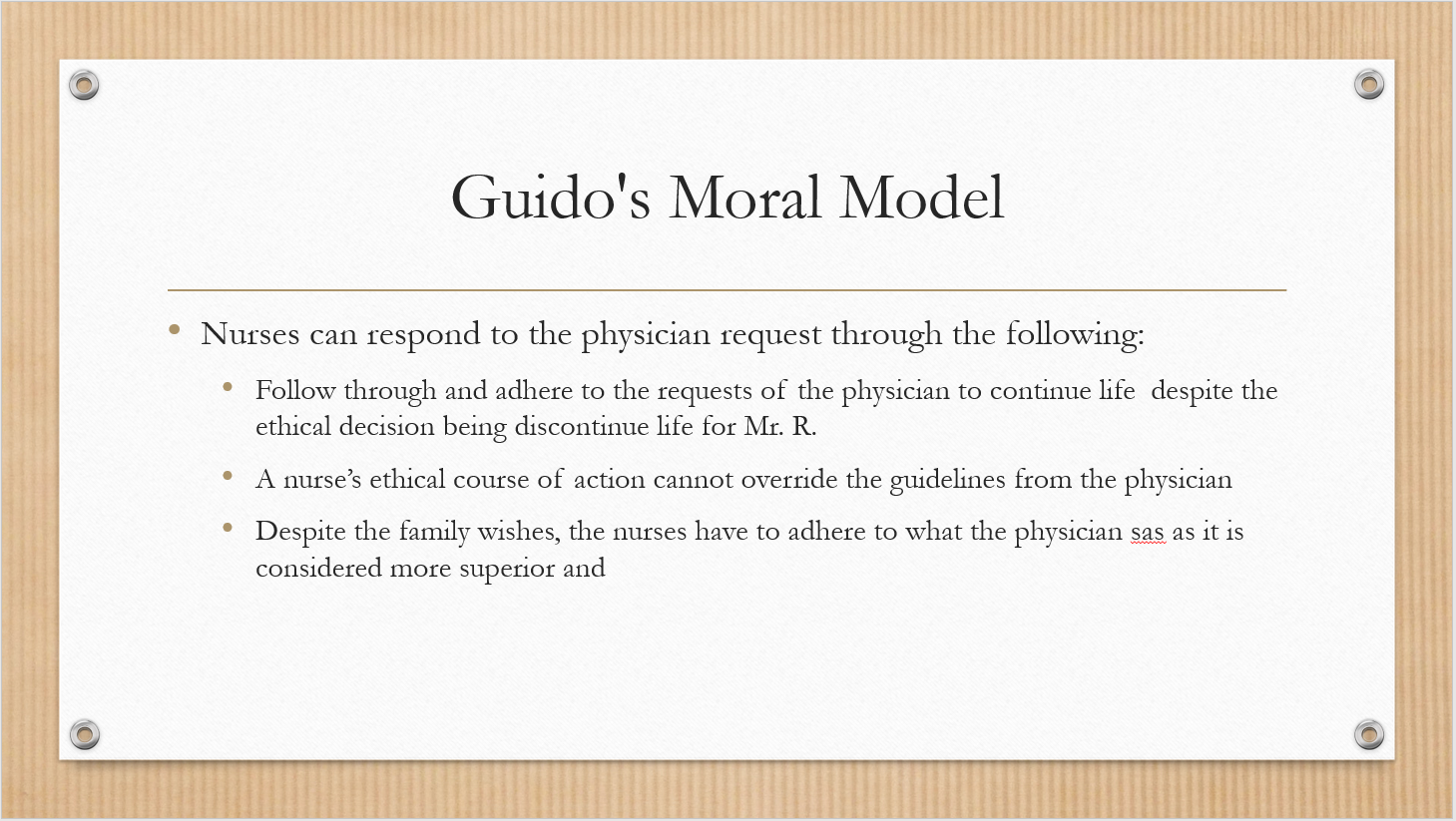
The healthcare sector is based on the different principles of ethics that govern how nurses an other care providers interact with patients. Autonomy is one of the ethical standards and requires that care provider adhere to the wish if the patient. However, the case of Mr. R. indicates how the nurse is at an ethical distress following a conflict between the decision of the physician and the wishes of the family (Silva & Guido, 2020). Despite the challenges, the nurse is junior to the physician and has to follow his commands and decisions regardless of any other conflicting issues.
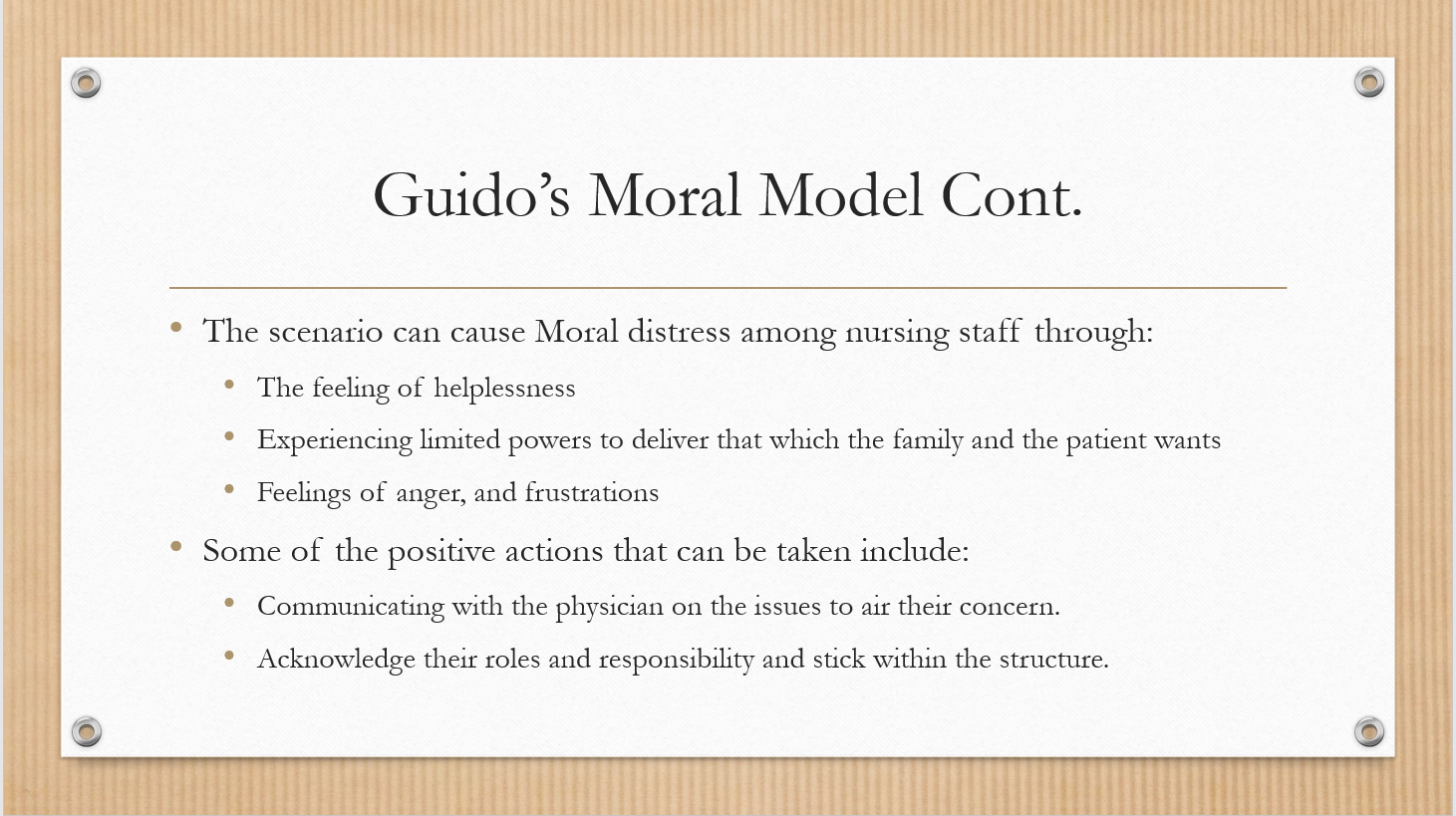
The case study also depicts different instances where a nurse might experiences moral distress. The conflict between the physician and the patient leaves the nurse at the center of the issues (Pozgar, 2020). As a care provider, the nurse has to be present for the family or patient and at the same time follow the directives of the physician.
The conflict causes moral distress leading to feelings of hopelessness, limited powers, and frustrations (Silva & Guido, 2020). Nurses can overcome the moral distress through communicating with the physician to air their concerns and reservations, and also acknowledging their position and following with the directives of the superior.
You be the Ethicist
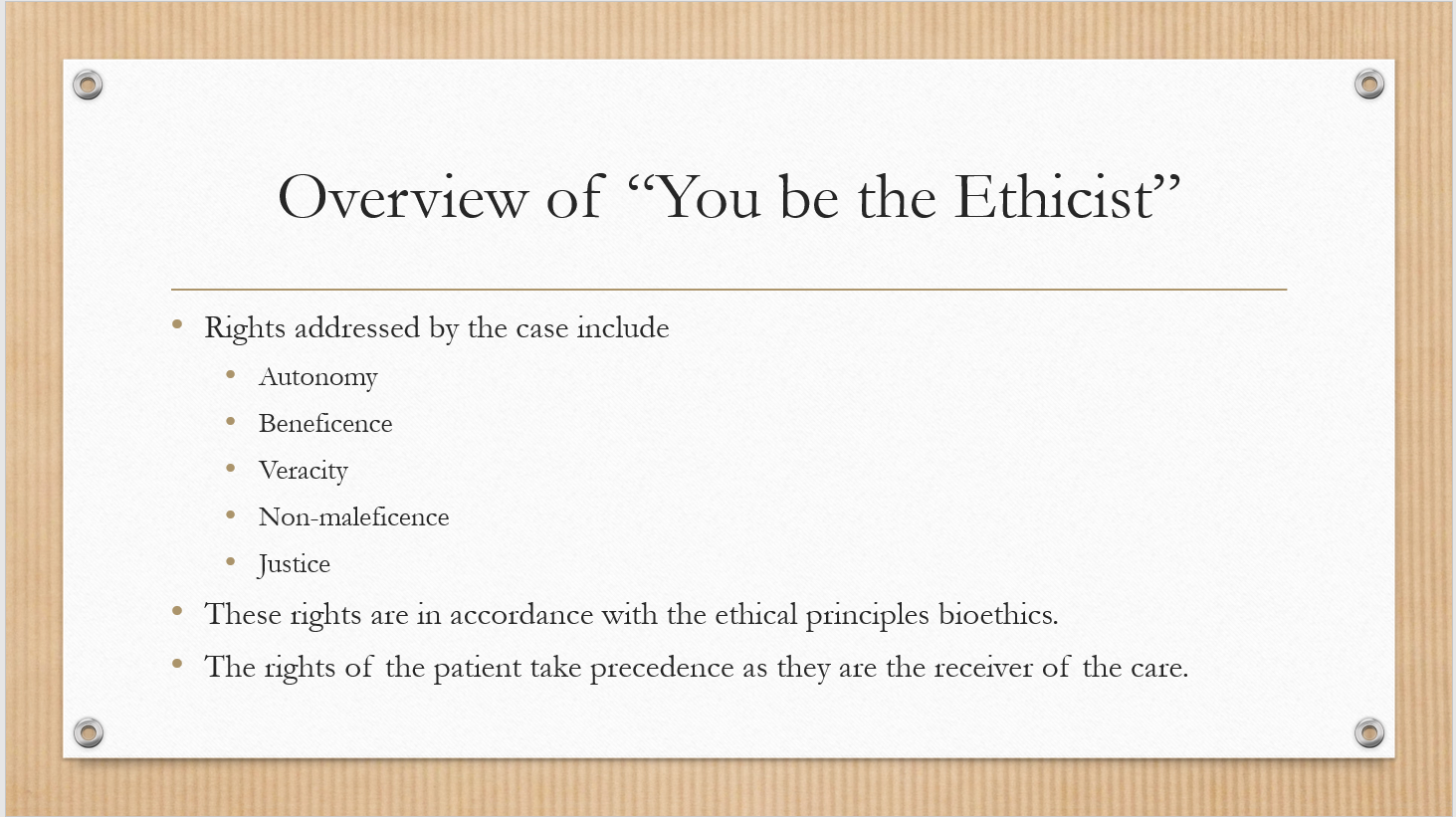
The case study focuses on the different rights of the patient and how they impact the outcome of care. Some of the rights addressed within the case include autonomy, beneficence, veracity, justice and non-maleficence (Silva & Guido, 2020).
- Autonomy – personal freedom and self-determination
- Justice – equal and fair treatment for everyone.
- Beneficence – support for good promoting actions.
- Non-maleficence – avoiding doing harm.
- Veracity – only telling the truth (Silva et al., 2018).
These rights are in accordance with the ethical principles bioethics.
The rights of the patient take precedence as they are the receiver of the care.
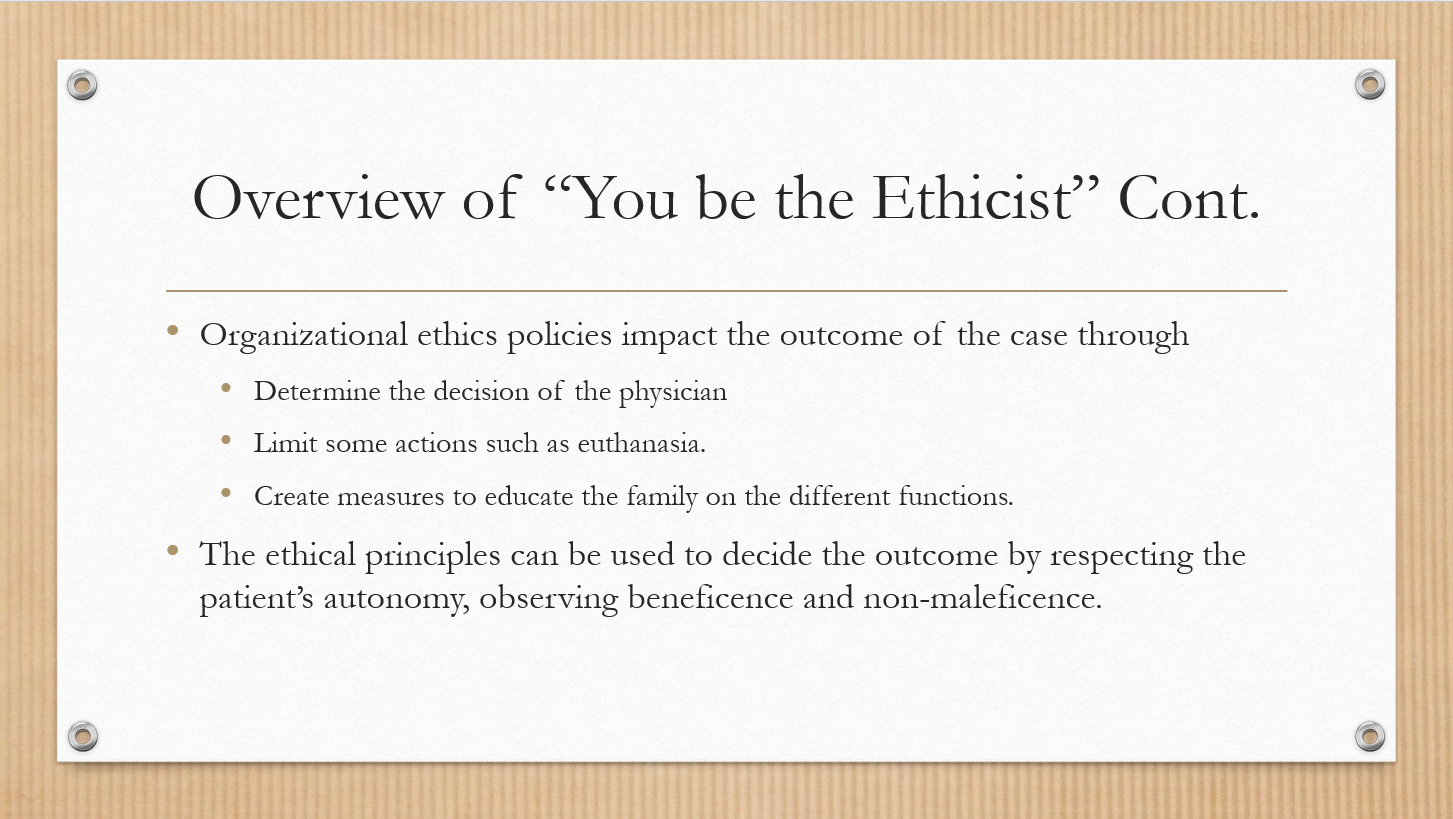
The ethical guidelines of an organization can have an impact on the outcome of care in different ways. For instance, the policy can be used to determine the decisions of the physician, limit some actions but at the same time create a means within which to educate the family and patient on the policies (Pozgar, 2020). The ethical principles can be used to decide the outcome by respecting the patient’s autonomy, observing beneficence and non-maleficence.
For instance, I would have Respected the patients autonomy by considering Mrs. Wanglie’s possible will if present and the legal guardian Mrs. Wanglie’s will about being on sustained life support. Observed beneficence by considering what would more beneficial to the patient and her family between withdrawing or continued life support (Silva et al., 2018).
Perspective of health care policy
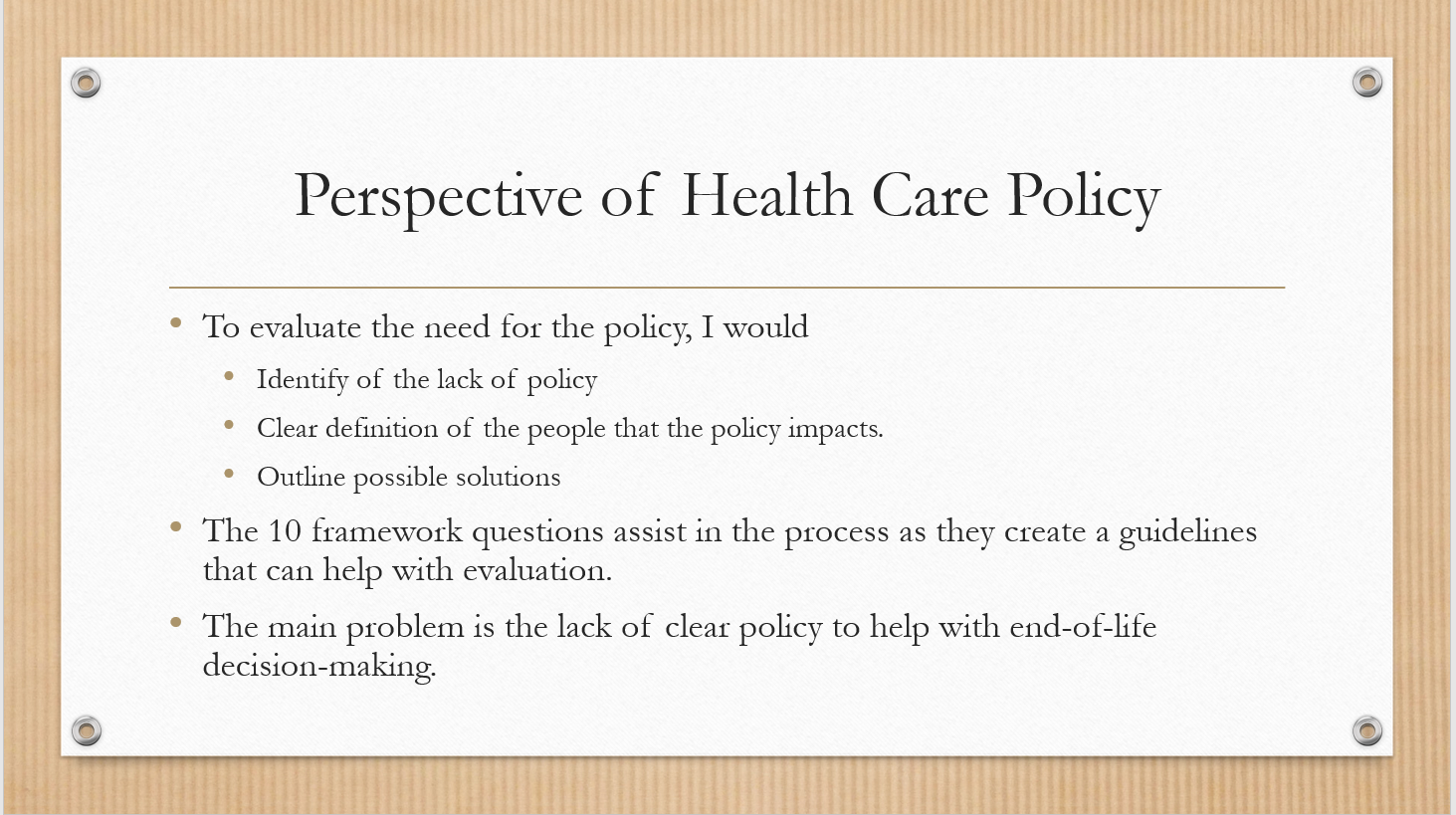
Polices are critical and can be used to change different aspects of care. However, there is need for evaluation and other analyses. To better evaluate the policy, I would Identify of the lack of policy, Clear definition of the people that the policy impacts, and Outline possible solutions. Simila
